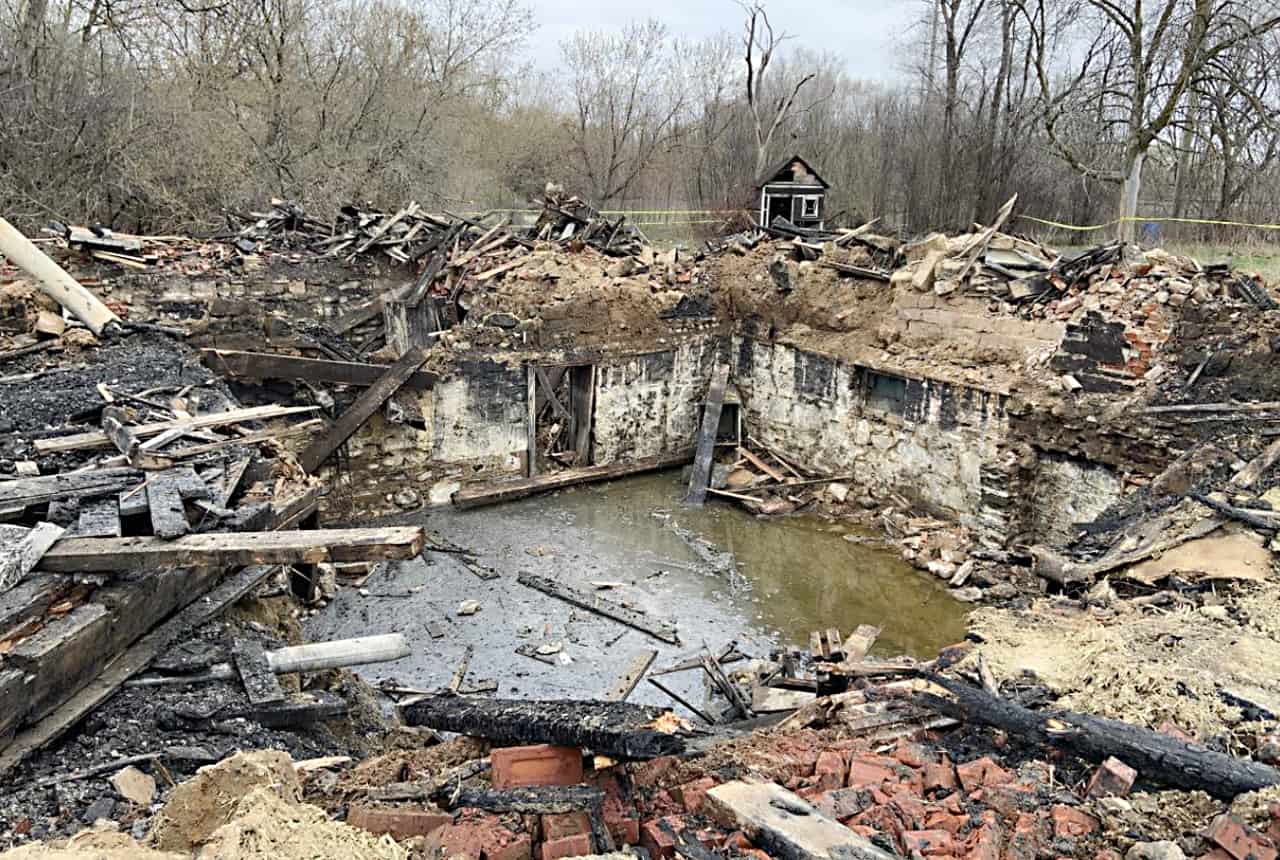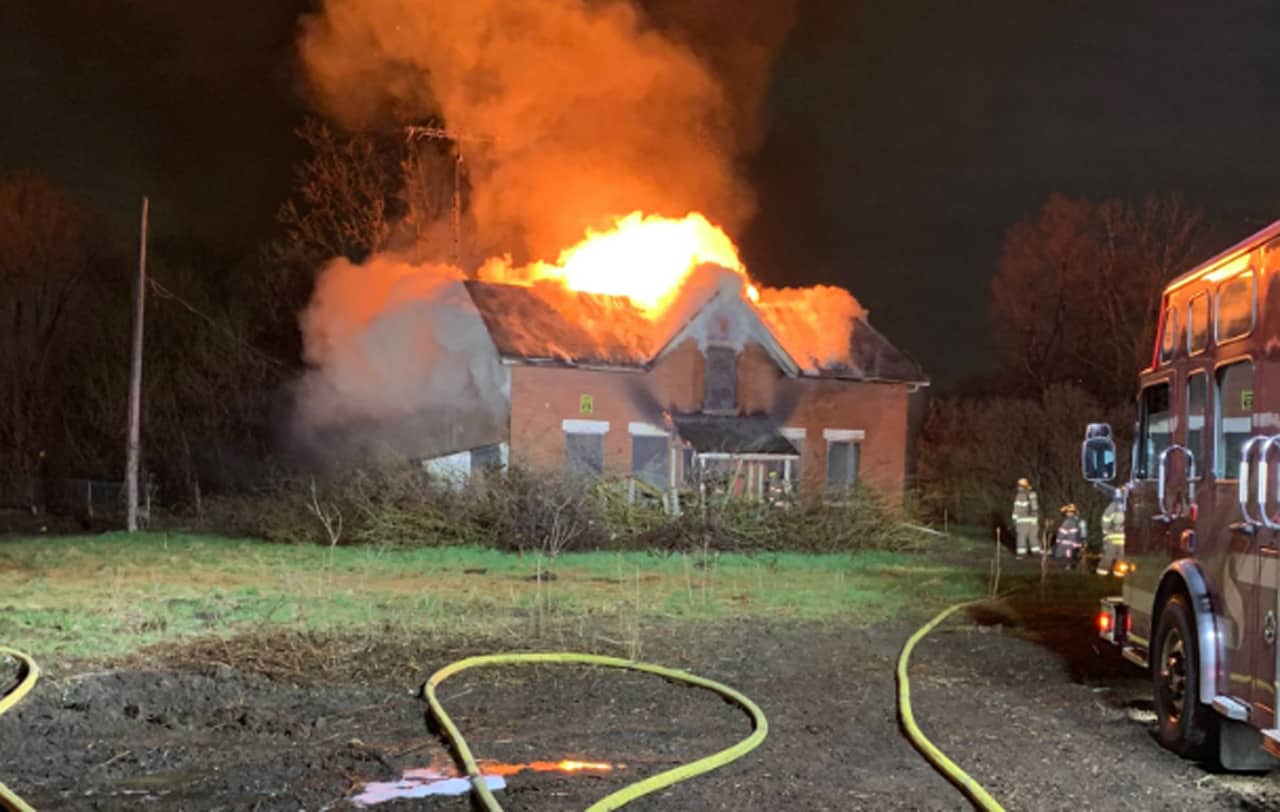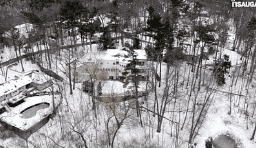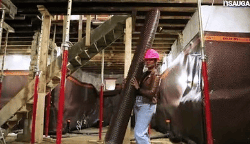Historic Brampton home destroyed by fire to be completely demolished
Published August 29, 2022 at 11:27 am

Fletcher House, an 1840 farmhouse, a heritage home destroyed in a fire in April, will likely be completely demolished.
The home was fully engulfed in flames when Brampton firefighters arrived on the scene late on April 25.
The one-and-a-half-storey home made of mud brick with a red brick veneer, located at 9393 McLaughlin Rd. N., received heritage recognition in 2020. It was home to the Fletcher family, one of the first settlers to farm the land in what was then Chinguacousy Township.
Built in the 1840s, the home was a “rare and early example of a mud-brick dwelling associated with the early settlement period of Peel County,” according to the 2020 heritage report.
There were no injuries in the fire but Brampton Fire and Rescue Services were, at first, uncertain if people may have been in the home when the fire started, according to a Heritage Impact Assessment report presented to the City of Brampton.
People struggling with homelessness were known to gather in the home. Brampton Fire asked the owner to demolish the structure so crews could search for human remains safely, the report notes. On April 28, the remaining structure was demolished with Brampton Fire Services and staff (Charlton Carscallen) from the City of Brampton Heritage Planning on site.
“Following the demolition, Brampton Fire and Rescue Services conducted a search and recovery task and found no human remains,” the report states.
The report notes the fire was potentially “started by squatters.”

Now, Brampton Heritage Board is set to consider the report on Wednesday, Aug. 31 recommending the remains of the building be demolished. The owner wants to clear the site, backfill the remaining open cellar hole and re-establish grade and sod. The owner, a numbered company (1000097069 Ontario Inc.), bought the property in March 2022.
The report suggests the home could be rebuilt using some of the material left after the fire.
Crews managed to salvage some of the original mud and straw bricks and timber framing. The report recommends salvaging as much original building materials in good condition as possible including mud/straw bricks, masonry bricks, stone sills, timber posts and beams under the supervision of a certified heritage professional.
Once the owner files a re-development application, there should be a preservation plan to re-construct the building, “or portion thereof, as best as possible,” the report suggests. The reconstructed home should use as many original materials as possible, either as a part of a new larger building or as a stand-alone structure.
But if it is impractical to rebuild the home, there should be a commemoration plan, which could include a structure, sculpture, or an exhibit containing the salvaged materials from the old home.
insauga's Editorial Standards and Policies advertising





